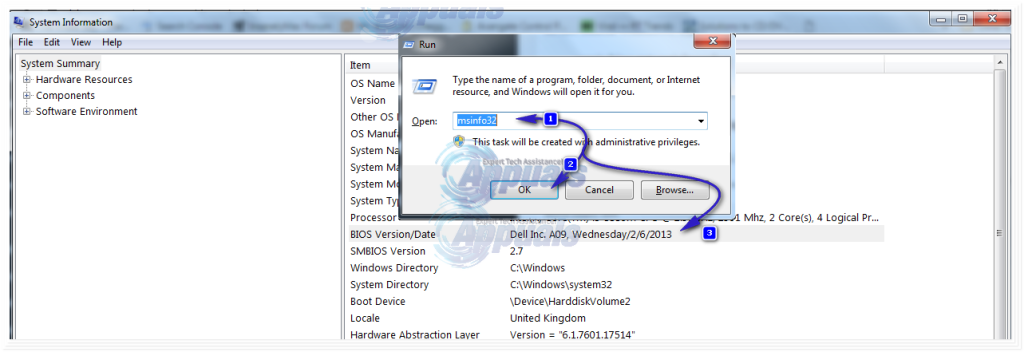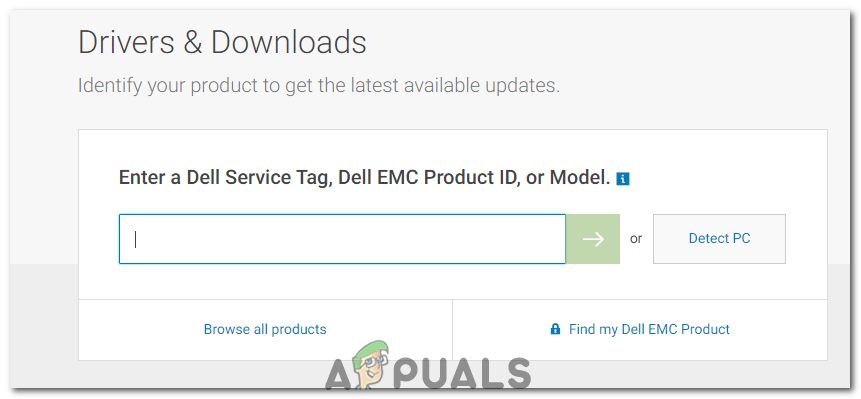BEST GUIDE: How to Update Dell BIOS
BIOS Updates are realized occasionally to patch up a critical issue with your device. It might be regarding the device’s security, privacy issue, or general optimization patch for your device. Updating your BIOS can be really beneficial to make sure that you get the max potential out of your device. However, updating doesn’t go as planned sometimes and you can face a lot of issues if your BIOS fails to update because of this issue. You should have a very good reason for updating your BIOS, also called flashing your BIOS. Unless you are having a specific issue like compatibility while installing new hardware that is resolvable through BIOS update, only then you should update your BIOS.
Solution 1: Via the Windows Operating System
To update the BIOS on your Dell computer or laptop, first determine the version currently running on your system.
Press the Windows key + R. Type “msinfo32” in the run window and hit Enter. The System Information window will open. Ensure “System Summary” is selected in the left pane. In the larger right pane, find “BIOS Version/Date“. The corresponding value is your BIOS version, note it for reference.

Visit www.dell.com/support/drivers. Enter your Service Tag or Express Service Code into the necessary text box. This information is usually found on the top or bottom of your desktop or laptop. If not, press the Windows key + R, type “cmd” in the Run dialog box and press Enter. In the appearing black window, input the following command.
wmic bios get serialnumber
Press Enter to execute the command. Record the characters listed as ‘Serial Number,’ as this is your Service Code.

Enter your Service Tag or Express Service Code into the appropriate text box on the webpage and click ‘Submit‘. Upon submission, your system model should appear under ‘Product Support‘.

Ensure “Drivers and downloads” is selected on the left. Scroll down, under “Optimize your system with drivers and updates,” and click “Find it Myself“. Confirm the correct Windows Operating System is listed next to “View all available updates”. If incorrect, click “Change OS” to choose the current Microsoft Windows installed on your computer. Click “BIOS” under “Refine your results:” in the drop-down menu to add a check mark. Click on the available BIOS to see its details. If the version and date are newer than the current one, click “Download File” to get it. Otherwise, you possess the latest BIOS version. Save, close running applications, and open the downloaded file.

Click Yes on the User Account Control warning message. Carefully follow the on-screen instructions. Accept confirmation and warning messages, which may vary depending on the system model. Do not turn off your computer during the update process. If using a laptop, ensure the battery is installed and the AC adapter is connected throughout the process.
Solution 2: Using a Bootable Flash Drive
If you cannot log into a system but need to update its BIOS, you must boot from your Flash drive. Ensure the USB is selected in the correct boot order. To identify the current BIOS version, power on your target system and press F2 until the BIOS setup appears. The BIOS version will be displayed next to ‘BIOS Revision’.
- To check for an updated BIOS version, visit www.dell.com/support/drivers from any accessible system.
- Enter your Service Tag or Express Service Code, typically found on the top or bottom of the relevant desktop or laptop, in the necessary text box to update its BIOS.

Entering the product tag - If not, scroll down, click “View products” under “Browse for a product“, and select your desktop or laptop model.
- Use the method provided in Solution 1 to verify if a newer BIOS version is available. If so, click ‘Download File‘ to obtain it. If not, rest assured you have the most recent BIOS version. Connect your flash drive intended for bootable use to your system. Press Windows Key + E to open Windows Explorer. Ensure to back up any data from the flash drive.
- Download Rufus from this link to make the Flash drive bootable, then open the downloaded file.
- Select your Flash drive under the Device category. Choose FAT32 from the File system drop-down menu and FreeDOS for the “Create a bootable disk using” option. Then, click Start.
- Once the process is complete, click close. Copy only the updated BIOS file to the flash drive, and make note of the file’s exact name.
- Connect the flash drive to the system you wish to update the BIOS of, then power it on. Continuously tap F12 until the Boot Menu appears.
- Select your Flash drive/USB from the boot menu and press Enter.
- A command prompt window will appear. Type “C:” and press “Enter.
- Type ‘dir‘ to list the files on the flash drive.
- Type the exact filename of the BIOS update file, such as E5440A13.exe, and press Enter.
- Follow the on-screen instructions. Do not turn off your computer or laptop during the update process. If you’re using a laptop, ensure the battery is installed and the AC adapter is connected throughout the process.